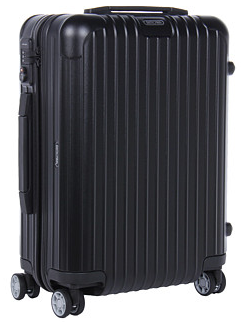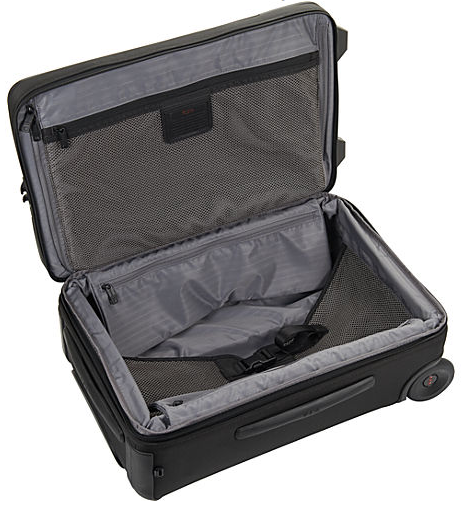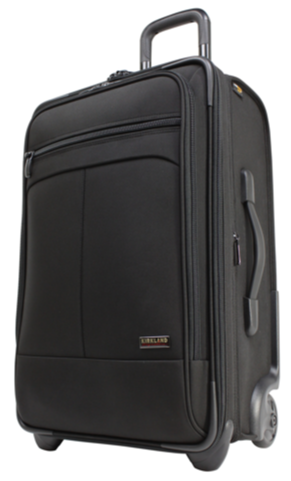Taking your belongings on a trip is no longer as easy as it used to be, when you could just throw some things in a bag and either lug it on the plane or let the airline ship it for you. New fees and much more stringent rules on size and weight can make it difficult to predict the total cost of your flight. Guess wrong, and you could be off by hundreds of dollars.
For example, United Airlines has some pretty reasonable fees for the first two bags under 50 lbs: just $25 for the first and $35 for the second. You might even be able to check them for free if you have a certain credit card or bought a certain ticket. But the third bag costs $150, and any bag over 50 lbs costs $100 more (even higher if it’s over 70 lbs). Elite status or an airline credit card can waive some fees, but you are still on the hook for bags that are particularly heavy or unusually large. And if you travel more often, small irritants can grow into big problems.
My in-laws are traveling more often now, and in a few months they’ll be going to Australia and New Zealand, with a cruise in between. So during my recent visit I gave them some advice on picking new Travel Luggage to take with them on their trip.
Baggage Measurements are Not Standardized
Most domestic U.S. carriers permit a carryon bag that measures 9 x 14 x 22 inches. These are the exterior dimensions and including anything attached, including handles and wheels.
Luggage manufacturers are not so predictable. I looked at a few options with my mother-in-law and was surprised to see two nearly identical bags by the same manufacturer with the same dimensions on their product sheet. The only difference was that one had two wheels for dragging behind you while the other had four spinning wheels that allowed you to push it upright. The second bag was at least two inches taller when I put them side-by-side.
Clearly the manufacturer did not include the wheels in its printed dimensions, and if the dimensions for the shorter bag were correct, I would bet the taller bag would not qualify as a carry on.
Another problem is that some manufacturers measure the outside of the bag (to represent total size) while others measure the inside (to represent capacity). Fortunately most list outside dimensions. One notable exception is Tumi; their 20-inch bags may sound small but are actually a perfect fit.
Finally, don’t trust any manufacturer just because they use the word “carry-on” in their product description. The Briggs & Reily Baseline International Carry-On Wide Body Upright measures 20 x 15.5 x 8 inches. While it may very well qualify as a carry-on bag for some airlines that measure total size, domestic carriers tend to specify a limit for each dimension.
Bottom line: the airline doesn’t care what the advertisement says. They’ll do their own assessment, and so should you. Bring a tape measure to the store.
Weight Limits Are Different for U.S. and Foreign Carriers
Many international carriers have more strict limits on the weight of a carry-on bag even if it meets the size limits, whereas U.S. carriers tend to have no weight requirements of any kind. And if you booked a codeshare or an itinerary with lots of airlines, look for the name of the airline with which you start your journey. They’re the ones who will accept your bag, so they also decide the rules.
I generally recommend that you aim for 50 lbs for a carry-on bag for domestic flights, just to make sure you don’t pay any overweight fees if you need to check it for some unexpected reason. That’s high. You will almost never reach it.
If you know you will be traveling internationally, many foreign carriers will limit you to about 7-8 kg (15.5-17.5 lbs). That’s low. You will find yourself packing less to make sure your bag still qualifies as carry-on luggage. And, yes, many carriers do weigh carry-on bags.
Some of the suitcases we looked at in the store were nearly 9 lbs, which leaves only 6-7 lbs for clothing. Lighter bags may cost more or lack features as things are tossed out to save weight. Rimowa is one of the few manufacturers that specializes in lightweight luggage since its first aluminum models (incredibly heavy, but lighter than traditional steamer trunks at the time). It’s ultra-light models weigh about 4 lbs.

I have been challenged several times for having an overweight carry-on, but I have been successful in pushing resisting demands to check it. My experience in Asia is that if I promise to lift the bag myself into the overhead bin (not a problem for a tall, athletic guy) then that’s usually good enough. When flying on European carriers, there is more of a “rules are rules” mentality, but elite status or a premium fare can convince them to grant an exception.
Scrutinize what you bring with you and whether you can do with less or just wash your clothes on the road. Spending $50 once on a hotel’s expensive laundry service may be preferable to spending $50 each way to bring twice as much.
Features Matter, but Know What You Need
Rolling luggage often comes with a special pouch that lets you store a suit or other pressed garment. I always remove these. They add extra weight, take away space, and I don’t think they actually do anything to avoid wrinkles. Just pack better. Even a suit jacket can be put in a carry-on by folding it in quarters (inside out first, then outside in, being careful to lay the sleeves flat).

What does matter to me are a sturdy telescoping handle, grips on the sides of the bag, a front pocket, and proper balance. My current Tumi Alpha bag does very well at the first and last of these criteria. I even bought my wife one. Although the Travelpro Crew 8 she owned before was otherwise perfectly fine, it would always tip over when she finished packing.
I’m less pleased with the handles and front pockets on our Tumi bags. There is no bottom handle, so I can’t pick up the bag on the top and bottom to place it on a valet stand. The front pockets are an issue because both go too deep, and stuff tends to pile up at the bottom. Also, neither one is large enough to fit my laptop (which would remove the need to carry a separate laptop bag).
What Not to Get
I don’t recommend bags with lots of bells and whistles, things like rolling duffels or multiple expanding pouches. If you have to expand it, then it won’t qualify as a carry on anymore. Rolling duffels seem to mix the worst of both worlds: extra weight and less protection.
Stick to boring, black bags. If you do need something larger that you plan to check, find a good quality carry-on and then buy a larger version in the same product family. Chances are this manufacturer knows what it’s doing.
Luggage sets make me roll my eyes. They sound good because you get several items for one price, but chances are you’ll only use one or two. That cost savings probably reflects lower quality and performance. Focus on buying just the bags you need with the features you need.
Luggage Roundup
Several of the options I’ve discussed here are expensive. Rimowa and Tumi can charge $500-600 for their flagship models, although I bought my Tumi on sale for about $250 right before the latest version was released. Cheaper product lines may exist from the same manufacturer. The TravelPro Crew series is about $200.
The suggested options below include many of the models I described above as well as one budget option: Costco makes a good quality, super cheap bag for just $100. It’s a little bulkier and may not be as well constructed (by comparison only; it’s actually very good quality for the price), but it remains a great choice for those who only travel a couple times a year.
- Kirkland Signature 21.5” Expandable Upright Carry-On — $99.99
- TravelPro Crew 10 21” Expandable Spinner — $195.49
- Rimowa Salsa 22” Cabin Multiwheel IATA — $525
- Rimowa Salsa Air Ultralight 21” Cabin Mutliwheel IATA — $475
- Tumi Alpha 2 International Expandable 2 Wheeled Carry-On — $595
- Briggs & Riley Baseline Domestic Carry-On Expandable Upright — $479
Have a favorite bag of your own? Feel free to share it in the comments!



